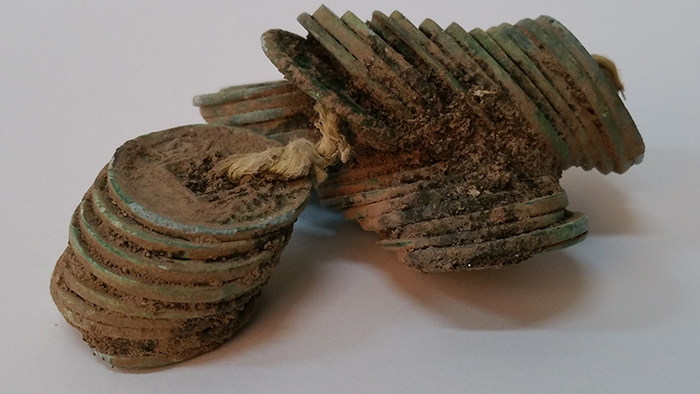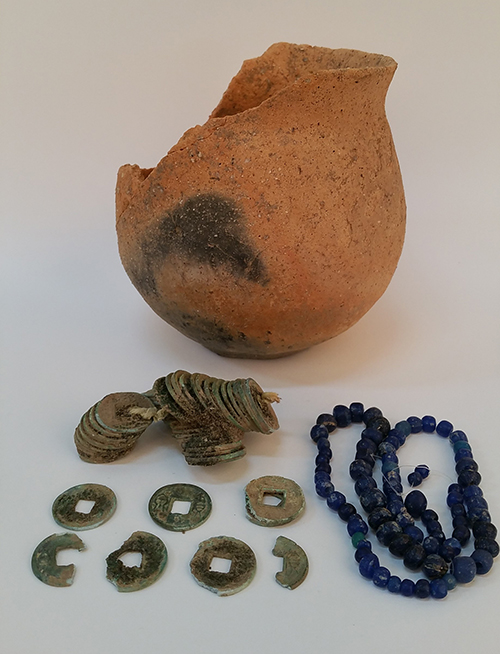
A bundle of 2,000-year-old coins believed to have come from the ancient Chinese Xin Dynasty are unearthed from a tomb in Gwangju, Jeollanam-do Province.
A bundle of ancient coins, called hwacheon (화천, 貨泉), believed to date back to the Chinese Xin Dynasty (신조, 新朝) (A.D. 8-23), has been unearthed in the ruins of a tomb in Gwangju, Jeollanam-do Province.
The Research Center of Dolmens in Northeast Asia announced on Jan.18 that it had discovered a bundle of some 50 ancient coins during an excavation at a ruin in Gwangju.
This is the first time that such a bundle of ancient coins has been found. The majority of coins that were unearthed are 2.2 to 2.3 centimeters in diameter, but some are 2.6 centimeter in diameter. The bundle was discovered in a rectangular togwang-myo, or earthen tomb, alongside a short-necked jar and 78 pieces of blue glass-jade beads.
Until this discovery, only 19 hwacheon coins have ever been unearthed. They were found in small quantities among piles of shells and other ruins related to day-to-day life in ancient civilizations.
The research center said that, "Since ancient coins from the Xin Dynasty are being found in specific locations around the Yeongsan River and along the southern coastal regions of South Jeolla Province, there is evidence that the governing body in Korea during that time maintained maritime trade routes with the Xin along the Yeongsan River and the southwestern coasts."
By Lee Hana
Korea.net Staff Writer
Photos: Cultural Heritage Administration
hlee10@korea.kr

A bundle of ancient coins is discovered in an earthen tomb alongside a short-necked jar and 78 pieces of blue glass-jade beads.